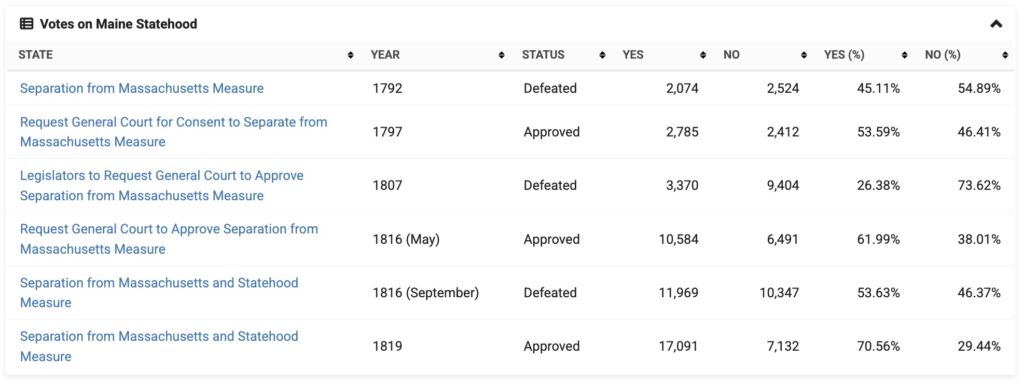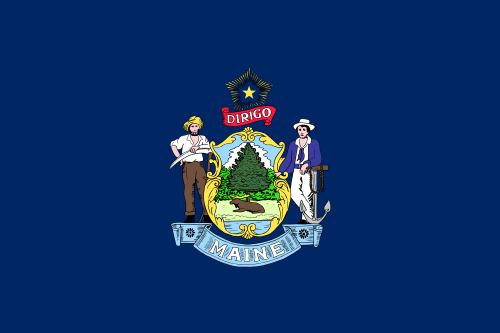Before Maine became the 23rd state on March 15, 1820, voters weighed in on six ballot measures over three decades regarding separation from Massachusetts. And the final ballot measure, voted upon 206 years ago on July 26, 1819, was approved 70.6% 'Yes' to 29.4% 'No.'
After the American Revolution, Maine was part of the Commonwealth of Massachusetts, often referred to as the District of Maine. According to Stephanie Kermes, in Creating an American Identity: New England, 1789–1825, "The movement for separation [from Massachusetts] began shortly after the American Revolution in 1784... The social, religious, and political gap between Massachusetts and the district of Maine widened during the early years of the republic." Kermes noted that there was often a divide between coastal and inland Maine, as coastal communities relied on trade with Massachusetts, while inland communities "felt deprived of their liberties by Massachusetts’ proprietors and the Congregationalists church establishment."
Voters in Maine decided on the first separation question on May 7, 1792, with 54.9% voting against independence from Massachusetts. In 1797, the question was on the ballot again, but this time, 53.6% voted for separation. However, the Massachusetts General Court did not act on the results, with legislators citing low voter turnout. In 1807, voters rejected the third separation question, with 73.6% voting against pursuing statehood.
The War of 1812 contributed to increased support for separation. Kermes wrote, "In the War of 1812, British occupation lasting for almost the duration of the war caused even bigger economic losses in Maine. Disappointed by Massachusetts’ failure to protect the district from the British, and frustrated with their economic situation, Mainers felt more and more enthusiastic about separating from the Bay State."
In 1816, voters approved a measure with 62.0% support, requesting that the General Court approve the separation of Maine from Massachusetts. The General Court responded, authorizing a convention to discuss the issue and draft a constitution. However, the legislation was amended to require a second ballot measure on September 2, 1816, with approval needing a five-to-four vote, which is about 55.6%. The question received 53.6% of the vote, falling short of the requirement, and the General Court dissolved the convention.
In 1819, the General Court approved legislation for another ballot question, scheduled for July 26. The legislation provided that, with voter approval, an election for constitutional convention delegates would be held on September 21, and the convention would convene in Portland on October 12. Voters would then need to approve the drafted constitution, and Congress would need to grant statehood to Maine. Voters decided on the sixth and final ballot measure regarding separation from Massachusetts, with 70.6% voting for statehood. Voters approved a proposed constitution on December 6, 1819.
In December 1819, legislation to grant statehood was introduced in Congress and became tied to the Missouri Compromise of 1820. Speaker of the House Henry Clay (Democratic-Republican) proposed that Missouri would be admitted as a slave state, and Maine would be admitted as a free state, preserving a balance between free and slave states in the U.S. Senate. Maine was admitted as a state on March 15, 1820.

Additional reading:


